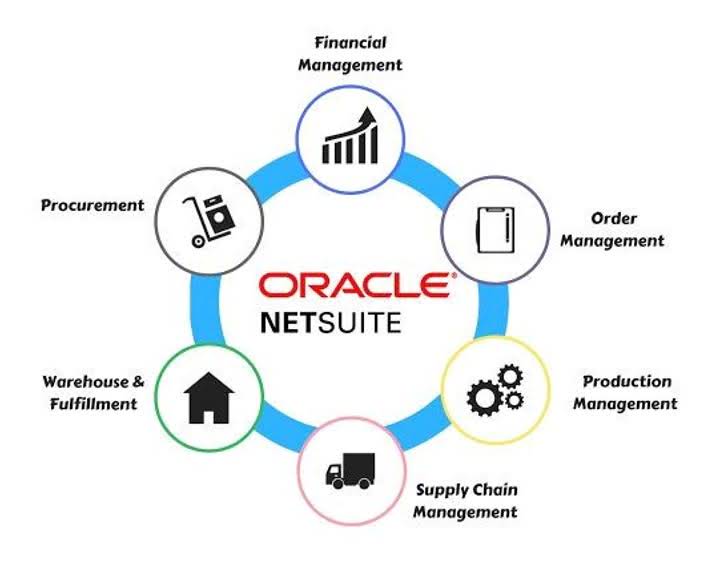Income Statement Items Explained With Examples

Proceed by documenting any non-operating revenues and expenses, such as interest and taxes, which bring clarity to net income. Using a structured format not only improves readability but ensures that every component connects logically, aiding in strategic analysis. This organized approach allows stakeholders to quickly identify strengths and potential areas for improvement. Expense accounts on an income statement reflect the costs incurred by a business in generating revenue. These may include fulfillment, technology, research and development (R&D), and stock-based compensation (SBC).

Operating Profit Margin (EBIT Margin)
With the economy always changing, current financial reports are essential. Non-operating expenses are costs not related to what a business mainly does. This includes interest on loans, losses from currency changes, or costs for restructuring.
Revenue Or Sales
A multiple-step income statement which accounts are found on an income statement provides a more detailed and nuanced view of a company’s financial performance compared to the single-step format. It breaks down revenues and expenses into different sections, typically distinguishing between operating and non-operating activities. This format begins with gross profit, calculated by subtracting the cost of goods sold (COGS) from total sales revenue.
What Types of Expenses Are Listed on an Income Statement?
Often the total amount of the common expenses will not decrease when a product line is eliminated. After the contribution margin is shown, the $6,000 of fixed costs and fixed expenses double declining balance depreciation method that are directly traceable to each product line are subtracted. Income statements can also be prepared for a company’s major segments, such as the consumer products division and the industrial products division. Except for small companies, the amounts shown on the income statement are likely rounded to the nearest thousand or million dollars (along with a notation to inform the reader). You can now use Wafeq-The best e-invoicing software to manage your operating expenses through full tracking of bills, purchase orders, and more.
- The balance sheet is also referred to as the Statement of Financial Position.
- Therefore, it is critical for the cost of the items sold to be calculated accurately.
- A high P/E ratio means that investors are willing to pay more for a company’s shares, relative to its earnings.
- Depreciation and amortization, although not direct expenses of primary activities, are important to consider as they provide a clear picture of spreading out the costs of capital assets over time.
- Begin by collecting detailed records of all sales transactions to determine total revenue, including any discounts or returns.

Below is a video explanation of how the income statement works, the various items that make it up, and why it matters so much to investors and company management teams. Businesses often have other expenses that are unique to their industry. Competitors also may use income statements to gain insights about the success parameters of a company, such as how much it is spending on research and development. The Revenue section shows that Microsoft’s gross margin, also known as gross (annual) profit, for the fiscal year ending June 30, 2025, was $193.9 billion. This number is arrived at by deducting the cost of revenue ($87.8 billion) from the total revenue ($281.7 billion)—in other words, revenue minus the amount it costs to produce that $281.7 billion.

Structure of the Profit and Loss Statement
As we saw, while a single-step trial balance income statement is straightforward and easy to understand, a multi-step could pose significant challenges, especially if you’re just starting out in accounting. By taking our course Fundamentals of Financial Reporting you’ll be ready to tackle these and most other accounting scenarios you’re likely to encounter in your practice. Operating revenue is realized through a business’s primary activity, such as selling its products. Non-operating revenue comes from ancillary sources such as interest income from capital held in a bank or income from renting a business property. If total revenue minus total operating expenses is a negative number, this is considered an operating loss.
The 10 Best Accounting Services in Fresno, CA with Free Estimates

With us handling your accounting and bookkeeping, you’ll be free to allocate your time where it counts most – to making sure your business runs smoothly. We handle timely quarterly filings and electronic submissions required by California authorities. Corporate taxes, including the flat 8.84% rate and the mandatory minimum franchise fee, are also covered. All financial records follow GAAP guidelines to keep your books organized, audit-ready, and compliant with state regulations. 1-800Accountant, America’s leading virtual accounting firm, offers specialized tax and bookkeeping services to help small businesses in Fresno and across California thrive while staying compliant with state regulations. As a small business owner, it is important to prioritize not only your business needs, but also your time.

Let us take your tax and accounting needs off your hands today.
I hope you will come to benefit from his seasoned wisdom as I have. We are experienced in working with nonprofits, including 501(c)(3) charitable organizations and Single Audits under Uniform Guidance. Hotels, restaurants, and breweries will stabilize cash flow and manage overhead costs with ease when we handle their accounting needs. Accounting and bookkeeping solutions specially designed for small businesses.

Finance and Accounting Tools We Specialize In
Check out the average hourly rate for accounting services in your area. The financial services of Roland Roos & Company have played an integral part in the work of Inspiration Cruises & Tours over the course of decades. Roland’s wise counsel has guided several of our business decisions and his astute observations have saved us thousands in taxes over the years. You might have a rush of wedding shoots one quarter and Bookkeeping vs. Accounting a quiet off-season the next.
Our Comprehensive Suite of Fresno Accounting & Bookkeeping Services Includes:
If you’re ready to get started, just fill out this form and we’ll be in touch. With modern web based applications, mobile apps and customer service tools like instant chat, you can run your company’s finances from anywhere in Fresno with ease. Without ever having to have an accountant step foot in your door. Small business accounting in Fresno can end up being a hassle when you don’t know what you are doing especially when it comes to your employees or even tax preparations. Knowing that all your finances are being handled appropriately and in a timely fashion means less worry for you as a small business owner.

Business Income Taxes

This is perfect for solo business owners and service-based businesses who want consistent, professional bookkeeping — without committing to a full accounting firm or bloated monthly retainers. Tab’s Bookkeeping, Inc. offers Administrative Management services including bookkeeping, payroll administration, and human resource management. We help small to mid-sized businesses create procedures and processes that support their Operations Management to maintain compliance with Federal, State, and local regulations. As with any important business decision, if you do your homework you can get the lowest bookkeeping service pricing in Fresno with our quick comparison. Of course the types of accounting services in Fresno can vary between different providers so it is important you are comparing apples to apples. Go Girl Finance has done the legwork to provide you a basic understanding of the cost of bookkeeping services in Fresno for just about any type of small or medium sized business.
- A CPA firm that’s acutely aware of the financial needs of your industry can make all the difference in managing your money.
- Other companies offer a monthly payment plan with additional tasks like bank reconciliations and custom reporting offered on an la carte basis.
- According to the American Institute of CPAs, certified public accountant (CPAs) financially advise individuals, big companies and small businesses to help them reach their financial goals.
- It is comforting to have complete confidence in your accounting team.
- We’re proud to have earned several prestigious awards and memberships in top accounting associations over the years.

SAGE has found that 90% of accountants think accounting is going through a cultural shift that favors technology. Most Fresno clients are onboarded within 3-5 business days, with cleanup and regular reporting starting promptly. No, we collaborate with your CPA to provide clean, categorized books that streamline tax filings. Follow four simple steps to unearned revenue get the best quote for your accounting and bookkeeping requirements. Ideal for established businesses seeking to optimize financial operations and drive sustainable growth. Perfect for small businesses and startups looking to establish professional financial practices.
- Nationally, full-time staff accountants earn between $40,000 and $80,000, depending on experience and other factors.
- This comprehensive service is for growing businesses with more complexity — like managing invoices, contractors, multiple accounts, or team expenses.
- We help small to mid-sized businesses create procedures and processes that support their Operations Management to maintain compliance with Federal, State, and local regulations.
- We don’t offer generic bookkeeping — we build long-term systems designed for reliability, scalability, and California compliance.
- Most Fresno clients are onboarded within 3-5 business days, with cleanup and regular reporting starting promptly.
- The financial services of Roland Roos & Company have played an integral part in the work of Inspiration Cruises & Tours over the course of decades.
We build systems that actually reflect how creatives earn, not how accountants think you should. Expense & Income Organization We separate business from personal, track deductions, and keep your accounts clean so tax time is smooth, not stressful. Discover how we can help you have better finances with a personalized demo from a Bench expert, ready to answer all your questions. Sign up as a customer today and get a free month of bookkeeping. Our team takes the time to deeply understand your business, answer your questions, help you link your accounts, and show you how Bench works. I’m Bronson Williams, founder of The Ledgerly Group, and I believe your business finances should work for you, not against you.
- This is a rapidly evolving situation, and we are monitoring reports from the CDC and other health agencies to enhance our knowledge and understanding of the spread of the coronavirus.
- You’ll speak with a bookkeeping specialist who reviews your setup, identifies risks, and offers a clear, no-pressure action plan.
- As a trusted Accounting & Bookkeeping Services Company, we handle everything from reconciliations to monthly financials, all reviewed by licensed CPAs.
- Maximize your tax savings, and make sure all your taxes are in order with our business income tax services.
- Tab’s Bookkeeping, Inc. offers Administrative Management services including bookkeeping, payroll administration, and human resource management.
Nonprofit Organizations
If there’s any change in your bookkeeping team, we’ll let you know as soon as possible and make sure the transition is a smooth one. Join over 35,000 US-based business owners who have streamlined their finances and have grown their businesses with Bench. Each month, your bookkeeper organizes your business transactions and prepares financial Bookkeeping Services in Fresno statements. Learn how to build, read, and use financial statements for your business so you can make more informed decisions. Our intuitive software automates the busywork with powerful tools and features designed to help you simplify your financial management and make informed business decisions.
The Ledgerly Group provides expert bookkeeping and CFO support to get your books back on track—fast. Established in 1944, eight decades of successful service have enabled us to serve a diverse range of clients with a broad range of tax and audit advisor service in the Fresno area. A trial balance serves as a vital tool in accounting by providing an overview of financial health. Trends and techniques in accounting are always changing, especially as new technologies emerge.
Work-in-Process WIP Inventory: Formula, Example, and Benefits
With these insights, you’ll be better equipped to control production flow and improve your business’s performance. The WIP value includes the resources used to transform materials, so it can have a significant value. Planners must track and manage WIP to ensure the business has the right components in the right quantities to support production.
Implement a robust inventory management system
This information is updated in real time, showing exactly how much WIP you have on hand, where it is located, and what stage of the production process it is in. Katana’s manufacturing ERP also provides tools to help you manage your WIP inventory effectively, such as the ability to set reorder points, so you know when WIP levels reach a certain threshold. The total value of WIP inventory is the sum of the costs of direct materials, direct labor, and manufacturing overhead incurred to produce the items currently in production. For some, work-in-process refers to products that move from raw materials to finished products in a short period. Manufacturers can collaborate with ecommerce businesses that use them for contract production. Very small businesses with simple operations may find a spreadsheet is adequate to track production and inventory.
What Is Included In WIP Inventory?
By synchronizing production with demand, businesses can reduce carrying costs and respond more effectively to changes in customer preferences. However, implementing JIT requires close collaboration with suppliers and efficient production processes. One of the biggest challenges in managing WIP inventory is keeping track of all the different components that make up your inventory.
Manufacturing Costs
This not only helps you manage your inventory more effectively but also ensures that you can meet customer demand and maintain profitability. For example, if you’re producing a batch of products and the labor costs increase due to overtime, this needs to be reflected in your WIP inventory. If it’s not, your inventory valuation will be off, leading to inaccurate financial statements and potential issues with profitability. Labor and overhead costs are another challenge when it comes to managing WIP inventory. These costs are often variable and can fluctuate depending on a variety of factors, such as production volume, labor rates, and utility costs. Keeping track of these costs and ensuring they’re accurately reflected in your WIP inventory can be a daunting task.
Challenges in Calculating WIP Inventory
Outdated and siloed technology does not provide the integrated, real-time data necessary to provide the… The work in process inventory account and the finished goods inventory account are both classified as current assets on the balance sheet. The main difference is that WIP is considered to be a short-term asset while finished goods are considered to be long-term assets.
- Inventory management software allows you to instantly track stock levels in real-time.
- All companies must therefore ensure they value their WIP correctly, especially for taxation purposes.
- Understanding the status and value of WIP is crucial for maintaining production efficiency and making informed business decisions.
- Minimizing excess WIP inventory and streamlining your production processes allows goods to move through your system more quickly and efficiently.
- To end this article, let’s take a look at why effectively managing and keeping WIP inventory as slim as possible is also good from a production and inventory management viewpoint.
Without WIP, production might have to wait for materials from the previous stage. For example, using barcodes and QR codes can improve the accuracy of inventory records and the speed at which those records can be updated. Like all other types of inventory, work-in-process inventory can be tracked using an inventory management system. Options include a manual inventory system, a spreadsheet inventory system, or inventory management software. That also means that using the right manufacturing partner is critical for any business looking to improve its work in process inventory. Analyse the production workflow to identify inefficiencies or unnecessary steps.
Set a timetable
- To overcome this challenge, it’s important to have an integrated inventory management system that tracks all aspects of your inventory in real-time.
- It refers to the process wherein raw materials are converted to finished products.
- Work in process accounting is also known as work in progress accounting.
- It provides insights into production efficiency and helps identify bottlenecks in the process.
- This quarter, your beginning WIP is $10,000, and it will cost you $75,000 to make your product.
And, finally, once the WIP inventory becomes finished goods, the $5,000 is debited to the finished good account and $5,000 is credited back to the WIP inventory account. Supply chain and managing all types of inventory are established fields of expertise now. And one thing that these professions agree on is that it’s usually best to minimize work in process inventory. Generally, most companies strive to reduce the amount of time that inventory spends at the work in progress (WIP) stage.
Beginning work in process inventory formula
- Manufacturing costs, the structuring of which we explained in the section above, include the cost of raw materials, labor, and overhead allocated to production.
- This can be attributed to the fact that for in-process inventory, there are numerous revolving components.
- Every business that produces goods goes through different stages before the final product is ready.
- Brands in the US can leverage ShipBob’s Inventory Placement Program (IPP) to speed up transit times and lower shipping costs.
- But if you have too few items in production, you might be facing a slowdown that could lead to costly order fulfillment delays.
Procurement managers might order more materials than necessary, causing overstocking and extra storage costs. Or, they might order less than needed, leading to slowdowns that drive up production and overhead costs. The second metric to calculate the current WIP inventory is the work in progress inventory manufacturing cost. This is the cost of all raw materials and labor involved in making a product. At this stage, you have products that are unfinished and therefore cannot be sold.
Challenges include tracking partially completed goods, accurately assigning costs, and preventing production bottlenecks. Lean manufacturing is a philosophy focused on minimizing waste and maximizing efficiency. Implementing lean principles helps businesses reduce excess inventory, cut down on unnecessary costs, and improve overall production efficiency.
- A cosmetics company manufactures a popular line of lipsticks from its assembly plant in South Carolina.
- However, by using this formula, you can only get an estimate of the work in process inventory.
- There is no how to calculate beginning work in process inventory formula—it is simply carried over from the prior accounting period.
- Without consistent checks, it can be hard to determine how much of a product is being manufactured or shipped.
- Organizations can get insights into their inventory levels by precisely determining the value of partially completed units after a production cycle.
- In this article, we’ll cover why WIP inventory matters in inventory management, its impact on your bottom line, and a simple way to calculate it.
Without consistent checks, it can be hard to determine how much of a product is being retained earnings manufactured or shipped. To ensure accuracy, you should conduct frequent physical counts and take advantage of technology (like barcode scanners and RFID tags). Without accurate data about current stock levels and future demand projections, you won’t be able to decide how much material you need to have on hand.
Self-employment tax: What it is and how to calculate it

Many freelancers may qualify for a deduction of up to 20% for qualified business income. In addition, contributions to certain retirement accounts may also be tax-deductible. Keep in mind, the Internal Revenue Service (IRS) dictates the maximum amount you can contribute in a given year. I am in exact same boat making about $5500 last year doing lawn care. I just filed my taxes n paid the self-employment tax (came out to like $840 ish).
✘ Don’t download your bank’s mobile app
Self-employed individuals can deduct half of their self-employment tax when filing their income taxes. This means if someone owes $2,000 in self-employment tax, they can deduct $1,000 on their tax return. This deduction helps lower the overall taxable income, making it easier to manage tax bills. Self-employment tax is a special tax that self-employed individuals must pay. The total rate is 15.3%, which includes 12.4% for Social Security Payroll Taxes and 2.9% for Medicare. This tax applies to net earnings from self-employment, which means the profit after deducting business expenses.
Make a seamless payroll switch and start 2026 right.
- The self-employed may pay more taxes than what an employer pays in FICA per employee.
- This deduction allows you to write off up to 20% of your QBI, plus 20% of any qualified real estate investment trust (REIT) dividends you receive.
- Because you’re doing this while the tax year is in progress, all you can do is provide your best estimate based on the income you earn and recent tax rates.
- A sole proprietor is an individual who runs a business solo, without any formal legal structure.
- The short answer is that they are two totally separate taxes, but they have a crucial—and beneficial—relationship.
- The self-employment tax rate is 15.3%, which includes a 12.4% Social Security tax and a 2.9% Medicare tax on net earnings.
Now that we’ve got the federal basics covered, let’s explore how this interacts with state taxes and what nuances you should know about the state and local level. The due dates are April 15, June 15, September 15, and January 15. Make sure to keep receipts and invoices for all these expenses in a central location. And no, your wallet stuffed with coupons, cash and cards is not the place for them. Having detailed records will how much are self employment taxes make tax time much easier and protect you if the IRS ever audits you. Married couple’s businessThe employment tax requirements for family employees may vary from those that apply to other employees.
States Where Taxpayers Will Save the Most Money on Taxes in 2026
- Utilizing resources like Bonsai Tax can help simplify the process and potentially save you money.
- You will need your annual tax return from the previous year to correctly fill out this form.
- Sales tax compliance is not just a legal requirement; it’s a vital part of running a successful business in Virginia.
- When figuring your adjusted gross income on Form 1040, Form 1040-SR, or Form 1040-NR, you can deduct one-half of the self-employment tax.
- However, if you expect to owe $1,000 or more in combined income tax and self-employment taxes, you’ll need to make estimated quarterly tax payments.
- For instance, if John is a freelance consultant in NYC making $100k profit, he’ll owe about $3k–4k in NYC UBT on top of everything else.
- Self-employment tax applies even if you don’t have taxes withheld like traditional employees.
If you earn money through a small business you own as a sole proprietor or partner, you may be required to pay self-employment taxes. This also applies to church employees who earn at least $108.28 and gig workers. This is usually the case for self-employed people, since they don’t typically have taxes withheld from their self-employment income. At first glance, the self-employment tax rate might seem like a bad deal for entrepreneurs, but there is a silver lining. The IRS allows the self-employed to deduct the employer portion of the tax, e.g., 7.65%, from their gross income. This deduction reduces income tax, but has no bearing on net earnings from self-employment or the self-employment tax itself.
Self Employment Tax for New York: Guide & Calculator

Medicare tax is 1.45%, and it’s assessed on all earned income, with no current threshold limits. In addition to the federal income tax, most states also impose their own state income tax. Some local governments – such as cities and counties – impose an income tax, too. Let’s take a closer look at both https://www.bookstime.com/ the self-employment tax and the income tax from a self-employed person’s point of view.

Before you can determine if you are subject to self-employment tax and income tax, you must figure any net profit or net loss from your business. You do this by subtracting your business expenses from your business income. If your expenses are less than your income, the difference is net profit and becomes part of your income on page 1 of Form 1040 or 1040-SR.

Using IRS Schedule SE

All information prepared on this site is for informational purposes only, and should not be relied on for legal, tax or accounting advice. You should consult your own legal, tax or accounting advisors before engaging in any transaction. The content on this website is provided “as is;” no representations are made that the content is error-free.

Refund options
The IRS will issue you an ITIN if you are a nonresident or resident alien and you do not have and are not eligible to get an SSN. To apply for an ITIN, file Form W-7, Application for IRS Individual Taxpayer Identification Number PDF. For more information, refer to the Questions and answers for the additional Medicare tax page. With our financial insights and credit score monitoring tools, you can view all of your accounts in one convenient dashboard. From there, you can see your various balances, spending breakdowns, and credit score.


